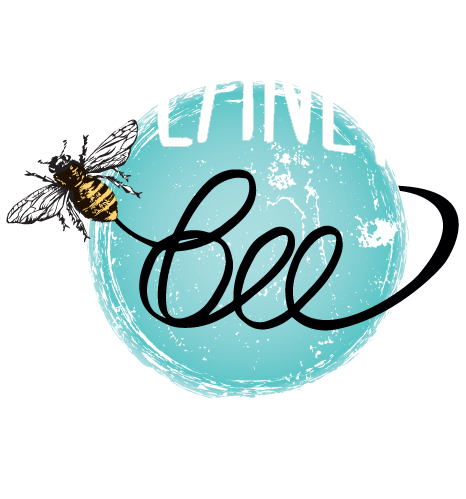The Essential Jobs of the Worker Honey Bee (Otherwise know as Apis Mellifera)
- Planet Bee Foundation
- Aug 8, 2024
- 4 min read
Updated: Aug 28, 2024
In the intricate world of the honey bee colony, the worker bees are the unsung heroes, tirelessly performing a variety of tasks that ensure the hive’s survival and success. Despite their small size, these industrious female bees take on an impressive range of responsibilities throughout their short lives, which typically last around six weeks. Each role is critical to the well-being of the hive, and together, the worker bees create a well-orchestrated system of cooperation and efficiency. Let’s delve into the different jobs of a worker bee and how each contributes to the hive's intricate social structure.

The Nurse Bees: Caring for the Next Generation (Days 1-10)
In the early days of their lives, typically between 1 to 10 days old, worker bees start as nurse bees. This role involves taking care of the colony’s most vulnerable members—the larvae. Nurse bees feed the developing larvae with a nutritious blend of royal jelly, honey, and pollen, ensuring they grow strong and healthy. They also attend to the queen, feeding her and grooming her to maintain her health and productivity. This stage of a worker bee’s life is crucial for the colony's growth, as the future of the hive depends on the successful rearing of new bees.
The House Bees: Keeping the Hive Clean and Organized (Days 11-20)
As nurse bees age, around days 11 to 20, they transition into the role of house bees. These diligent workers are responsible for maintaining the cleanliness and organization of the hive. They remove debris, dead bees, and other waste, ensuring that the hive remains a hygienic environment free from disease and pests. House bees also produce beeswax from special glands on their abdomens, which they use to build and repair the honeycomb structure within the hive. This wax is essential for storing honey, pollen, and the queen’s eggs, making the house bees’ work foundational to the hive’s structure and function.

The Forager Bees: Gathering the Hive’s Lifeblood (Days 21-35)
In the final phase of their lives, typically from days 21 to 35, worker bees become foragers, venturing outside the hive to collect the vital resources that sustain the colony. Forager bees gather nectar, which they bring back to the hive and convert into honey—a key food source for the colony. They also collect pollen, which serves as a protein-rich food for developing larvae, and water, which helps regulate the hive’s temperature and humidity.
Forager bees have an extraordinary ability to communicate with their hive mates through a behavior known as the "waggle dance." This dance conveys precise information about the location of food sources, enabling other foragers to find and collect resources efficiently. Foraging is a dangerous job, with bees often facing threats from predators, harsh weather, and long distances. Despite these challenges, forager bees persist, driven by their instinct to support the hive.

The Guard Bees: Defending the Hive (Days 18-21)
Around days 18 to 21, some worker bees take on the critical role of guard bees. These bees stand watch at the hive entrance, monitoring for potential threats such as predators or intruding bees from other colonies. When a threat is detected, guard bees will aggressively defend the hive, using their stingers as a last line of defense. While stinging an intruder results in the bee's death, this selfless act is a testament to the worker bee’s unwavering commitment to the hive’s survival.
The Field Bees: Architects of the Hive's Future (Days 21-35)
Worker bees also play a role in scouting for new hive locations when the colony needs to expand or relocate. These scout bees, often older and more experienced foragers, typically around days 21 to 35, explore the surrounding environment to find suitable sites for a new home. Once they identify a promising location, they return to the hive and perform a waggle dance to communicate their findings to the rest of the colony. This democratic process involves multiple scouts dancing and sharing information until a consensus is reached on the best site for the new hive.
The Lifeblood of the Hive
The roles of worker bees are diverse and ever-changing, yet each is integral to the hive's survival. From caring for the young and maintaining the hive to foraging for food and defending against threats, worker bees demonstrate an extraordinary level of adaptability, cooperation, and dedication. Their efforts ensure the colony remains strong, resilient, and capable of thriving in a constantly changing environment.
At Planet Bee Foundation, we celebrate the vital contributions of worker bees and their incredible work ethic. By understanding the various roles these bees play, we gain a deeper appreciation for the complex and fascinating world of honey bees. Supporting bee conservation efforts not only helps protect these essential pollinators but also safeguards the delicate ecosystems that rely on their tireless work.
Interested in having a bee hive on your corporate campus? Learn more here!

Sources:
Winston, M. L. (1987). The Biology of the Honey Bee. Harvard University Press.
Seeley, T. D. (1995). The Wisdom of the Hive: The Social Physiology of Honey Bee Colonies. Harvard University Press.
Seeley, T. D. (2010). Honeybee Democracy. Princeton University Press.
Johnson, B. R. (2010). Division of labor in honeybees: form, function, and proximate mechanisms. Behavioral Ecology and Sociobiology, 64(3), 305-316.
Page, R. E., & Amdam, G. V. (2007). The making of a social insect: developmental architectures of social design. BioEssays, 29(4), 334-343.
National Geographic. (n.d.). Honey Bees. Retrieved from National Geographic
Bee Culture. (n.d.). The Roles of Worker Honey Bees. Retrieved from Bee Culture
